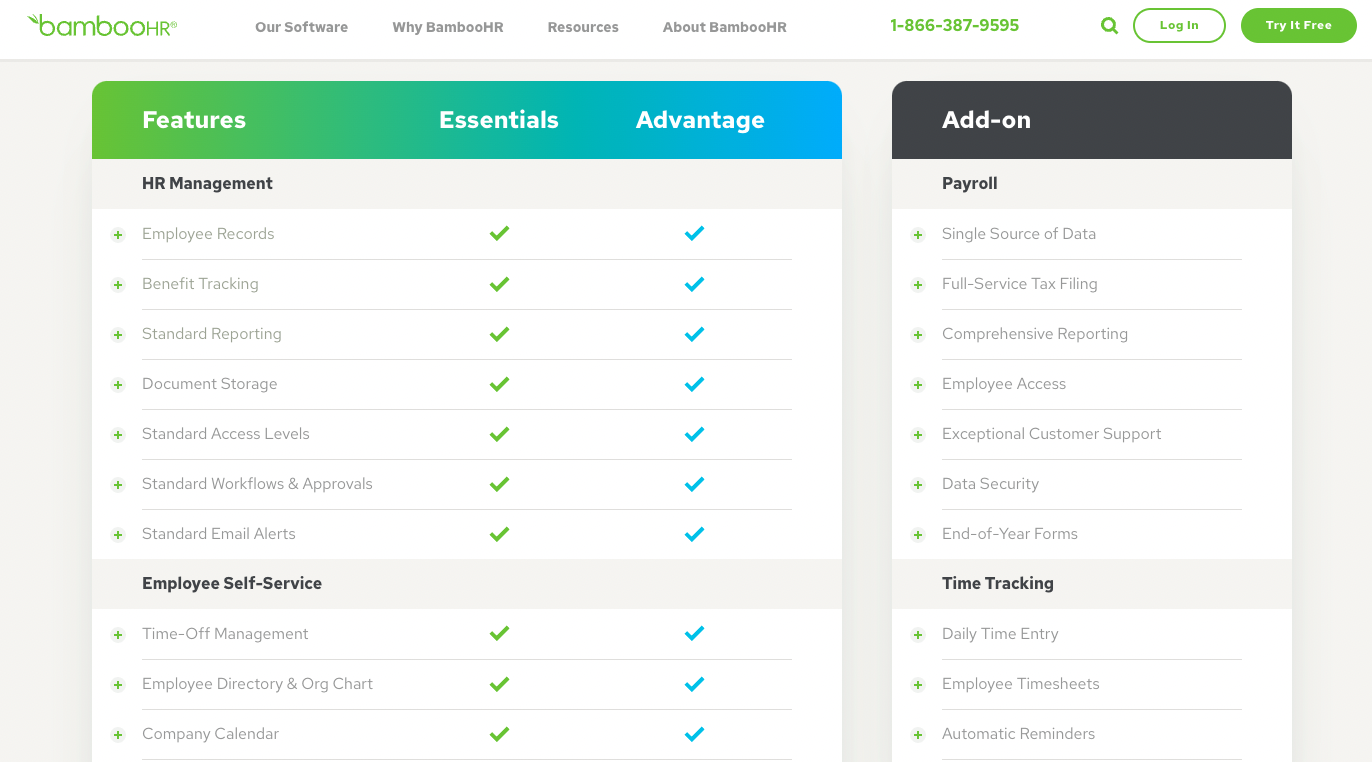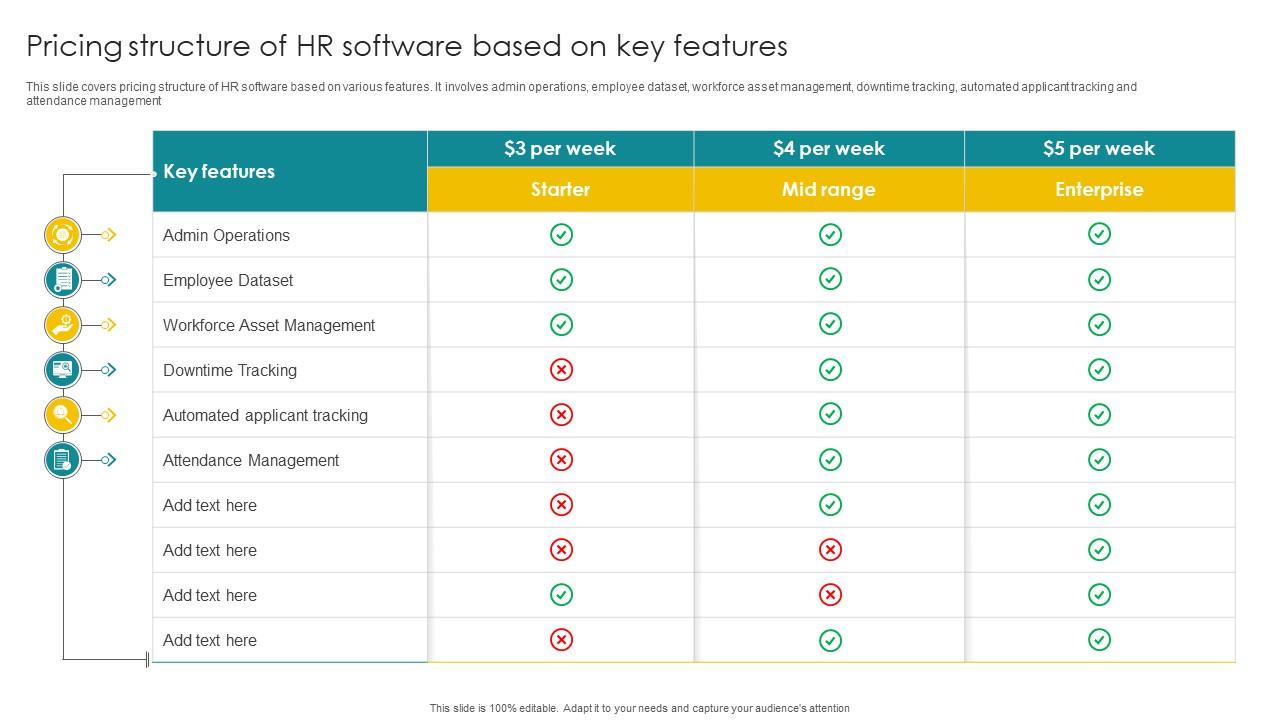Starting with hr software pricing, this introductory paragraph aims to provide a captivating overview of the various aspects involved in determining the cost of HR software. From factors influencing pricing to different pricing models and negotiation strategies, this topic delves into the complexities of HR software pricing in a comprehensive manner.
The discussion will shed light on how features, number of users, implementation complexity, and customization options impact pricing, the types of pricing models available, additional costs to consider, and effective strategies for negotiating the best deals when purchasing HR software.
Factors influencing HR software pricing

When considering the pricing of HR software, several key factors come into play. These factors can significantly impact the cost and structure of HR software solutions.
Features and Functionalities
The range of features and functionalities offered by HR software can greatly influence its pricing. More advanced features, such as AI-driven analytics, automated workflows, and employee self-service portals, often come with a higher price tag due to the added value they provide to users.
Number of Users or Employees
The number of users or employees using the HR software can also impact pricing. Some software providers charge based on a per-user basis, while others offer tiered pricing based on the size of the organization. Larger companies with more users may end up paying more for their HR software solution.
Implementation Complexity
The complexity of implementing the HR software can play a role in determining pricing. Software solutions that require extensive customization, integration with existing systems, or significant training for users may come at a higher cost due to the additional time and resources required for successful implementation.
Customization Options
Customization options offered by HR software providers can also influence the pricing structure. Tailoring the software to meet specific organizational needs or industry requirements may incur additional costs. However, this customization can lead to a more personalized and efficient HR software solution for businesses.
Types of pricing models for HR software
When it comes to pricing HR software, there are several models that companies can choose from based on their needs and budget. Let’s explore some of the most common pricing models in the industry.
Subscription-based pricing vs. One-time licensing fees
Subscription-based pricing involves paying a recurring fee at regular intervals, usually monthly or annually, to access the software. On the other hand, one-time licensing fees require a single upfront payment for a perpetual license to use the software.
- Subscription-based pricing: Offers more flexibility as companies can scale their usage up or down based on their needs. It also includes updates and support in the subscription fee.
- One-time licensing fees: Provide a sense of ownership and may be more cost-effective in the long run for companies with stable HR software needs.
Usage-based pricing models
Usage-based pricing models charge customers based on their actual usage of the software, such as the number of employees managed or the features utilized. This can be a cost-effective option for companies with fluctuating HR software needs.
Advantages and disadvantages of tiered pricing structures
- Advantages: Tiered pricing structures offer different levels of features and support at varying price points, catering to a wide range of customer needs. They also provide a clear upgrade path as a company grows.
- Disadvantages: Tiered pricing can sometimes lead to paying for features that are not needed, and it may be challenging to switch between tiers based on changing requirements.
Freemium models in the HR software industry
Freemium models offer a basic version of the software for free, with the option to upgrade to a premium version with additional features and functionalities for a fee.
Additional costs to consider in HR software pricing
When evaluating HR software pricing, it’s important to consider additional costs beyond the initial price tag. These extra expenses can significantly impact the total cost of ownership and should not be overlooked.
Maintenance and Support Fees
Maintenance and support fees are essential for keeping your HR software running smoothly. These fees typically cover software updates, bug fixes, and technical support. While these costs may seem small compared to the initial purchase price, they can add up over time and significantly impact the total cost of ownership.
Costs Associated with Integrations
Integrating your HR software with other systems, such as payroll or accounting software, can incur additional costs. These integrations may require customization, configuration, and ongoing maintenance, all of which can add to the overall price of the software.
Pricing Implications of Data Migration Services
Data migration services, which help transfer your existing HR data to the new software, can also come with a price tag. The complexity of the migration process, the amount of data to be transferred, and the level of customization required can all impact the cost of this service.
Role of Training and Onboarding Costs
Training and onboarding costs are another important factor to consider in HR software pricing. Proper training ensures that your team can effectively use the software, maximizing its value. These costs may include training sessions, user manuals, and ongoing support, all of which can contribute to the overall price of the software.
Strategies for negotiating HR software pricing

Negotiating HR software pricing can be a crucial step in getting the best value for your investment. Here are some strategies to consider:
Leveraging Vendor Discounts
When negotiating pricing with HR software vendors, don’t be afraid to ask for discounts. Vendors may be willing to offer lower prices, especially if you are a long-term customer or if you are purchasing multiple licenses. Be prepared to negotiate and highlight the value you bring as a client.
Understanding Contract Terms and Conditions
It’s essential to thoroughly understand the contract terms and conditions when negotiating HR software pricing. Pay close attention to factors like payment schedules, renewal terms, and any potential penalties for early termination. Clarifying these details can help you avoid unexpected costs and ensure a fair deal.
Bundling Services for Better Pricing Deals
Consider bundling services or features to secure better pricing deals from HR software vendors. By combining multiple offerings or functionalities into a package deal, you may be able to negotiate a lower overall price. This approach can also help you customize the software to better suit your specific needs.
Evaluating ROI for Justifying Pricing Negotiations, Hr software pricing
When negotiating HR software pricing, it’s crucial to evaluate the return on investment (ROI) that the software can provide. Analyze how the software will improve efficiency, streamline processes, and contribute to cost savings in the long run. By presenting a strong business case based on ROI, you can justify your pricing negotiations effectively.
Conclusion: Hr Software Pricing

In conclusion, HR software pricing is a multifaceted topic that requires a thorough understanding of the factors influencing costs, various pricing models, and negotiation techniques. By grasping these intricacies, businesses can make informed decisions when investing in HR software solutions.
